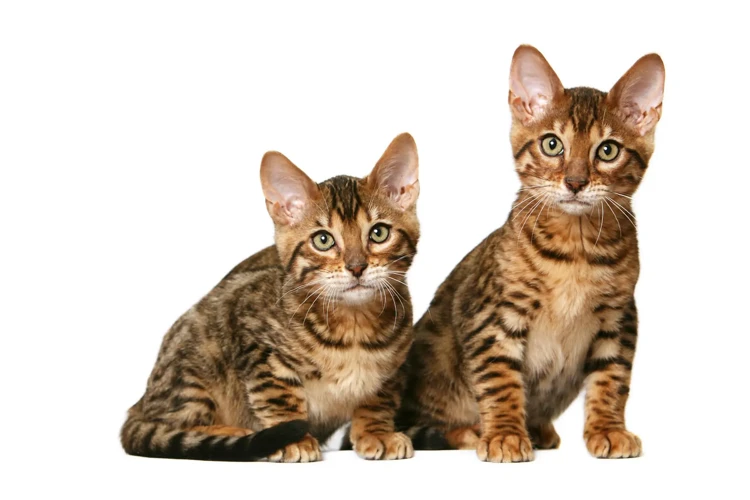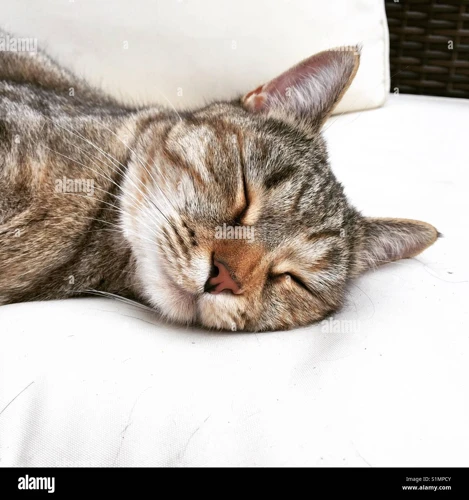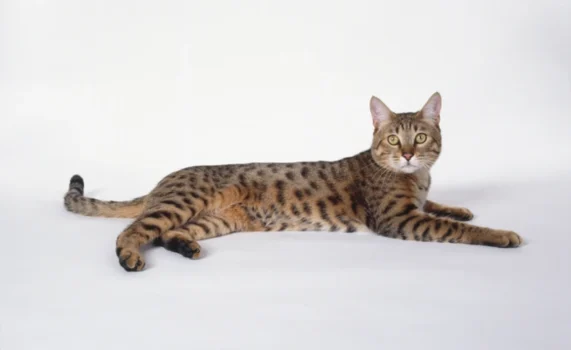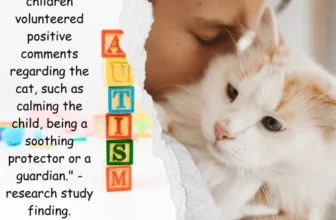You’re right to wonder about how California Spangled cats get along with dogs. It’s no secret that introducing any two animals can be tricky, especially when they have different personalities and habits. But don’t fret! With the right approach and a little bit of patience, it’s possible for dogs and California Spangled cats to live together in harmony. In this article, we’ll explore the different factors that affect their interactions, how to prepare for a successful introduction, and tips on how to promote peaceful coexistence. Plus, we’ll address some frequently asked questions and highlight the benefits (and challenges) of raising these two furry friends together. So let’s dive in and learn how to make the bond between your California Spangled cat and dog a happy and loving one.
Do California Spangled Cats Get Along with Dogs?

As a pet owner, you might be wondering if your California Spangled cat can coexist peacefully with a dog. While some felines may be known for their aloof nature, California Spangled cats are a unique breed that may surprise you with their sociability and affectionate personalities. However, introducing a new pet can always be a daunting task, and it’s important to consider several factors to promote a peaceful coexistence. In this section, we will explore the compatibility of California Spangled cats and dogs, and offer tips on how to ensure a successful introduction. If you’re interested in introducing other pets to your California Spangled, such as small animals or birds, check out our tips for coexisting with small animals and birds.
Factors to Consider when Introducing Cats and Dogs
When considering introducing a California Spangled cat to a dog, there are several factors to keep in mind to ensure a successful coexistence. First and foremost, it is important to remember that each individual animal has its own unique personality and preferences. Despite breed-specific characteristics, every cat and dog combination will have its own set of challenges and opportunities.
Temperament: Before introducing a dog to a California Spangled cat, it is crucial to assess the dog’s temperament. Some dogs are naturally more laid back and relaxed, while others have a high prey drive and may be prone to chasing or attacking small animals. It is essential to consider these factors to ensure compatibility between the two animals.
Age: When introducing a California Spangled cat to a dog, age is an important factor to consider. Young animals may be more adaptable and open to new experiences, while older animals may be set in their ways and less willing to change their behavior.
Past Experiences: Past experiences can shape an animal’s behavior and attitude toward other animals. If a dog has a history of aggressive behavior toward cats, it may not be a good candidate for a successful introduction.
Size: The size of the dog is also a significant factor to consider. A large dog may unintentionally harm a small cat, so it is essential to supervise their interactions carefully.
Training: Proper training is necessary to ensure that both the dog and cat understand what is expected of them. Dogs should be trained not to chase or attack cats, while cats should be trained not to initiate aggressive behavior.
Introducing a California Spangled cat to a dog requires patience, preparation, and careful consideration. For more information on introducing new pets to your home, check out our article on bringing a new California Spangled cat into your household. To learn more about the compatibility of California Spangled cats with other pets, read our guide on the California Spangled cat’s compatibility with other animals.
How the California Spangled Breed Affects their Interaction with Dogs
California Spangled cats are known to be highly intelligent and energetic, and their personality can play a role in how they interact with dogs. Here are some ways the California Spangled breed can affect their interaction with dogs:
| Personality Trait | Effect on Interaction with Dogs |
|---|---|
| Curiosity | The California Spangled cat’s curiosity can lead to an interest in the dog, which can ease the introduction process. However, it’s important to ensure that the cat’s curiosity doesn’t turn into aggression towards the dog. |
| Territorial Nature | California Spangled cats are known to be territorial, which can lead to some initial tension with a new dog in the home. However, with proper introduction and socialization, they can learn to coexist and even become friends with the dog. |
| High Energy | California Spangled cats have a lot of energy, which can lead to playful interactions with the dog. However, it’s important to supervise their interactions, especially in the early stages of their relationship, to ensure that the play doesn’t turn aggressive or dangerous. |
| Independent Nature | California Spangled cats are known to have an independent nature, which can make them less interested in forming close bonds with the dog. However, with proper socialization and positive reinforcement, they can learn to tolerate and even enjoy the dog’s company. |
It’s important to remember that each cat and dog has their own unique personality and temperament, regardless of breed, and that their individual traits will ultimately affect their interaction with each other. It’s crucial to approach the introduction process with care and patience, and to monitor their interactions closely to ensure a safe and peaceful coexistence.
Potential Scenarios of Cats and Dogs Interaction
When introducing your California Spangled cat to a dog for the first time, there are different potential scenarios that might occur. It is crucial to learn about them to anticipate and prepare for them. Here are some possible scenarios, including what they mean and what measures you should take:
- The cat is aggressive towards the dog. If your cat shows signs of aggression towards the dog, it might mean that they feel threatened or anxious. Signs of aggression include hissing, growling, swatting, and arching. You should remove your cat from the situation and give them some time to calm down. Try to determine the cause of their behavior and address it accordingly. For example, your cat might feel stressed because of the dog’s scent or size. In that case, you can try to keep them separated and gradually introduce them.
- The dog is aggressive towards the cat. If your dog shows signs of aggression towards the cat, it might mean that they see the cat as prey or a threat. Signs of aggression include barking, lunging, chasing, and biting. You should also remove the dog from the situation and give them time to calm down. It is crucial to train your dog to behave appropriately around cats, using positive reinforcement. You can also provide your cat with a safe space where the dog cannot access them.
- The cat is fearful of the dog. If your cat is scared of the dog, they might hide, freeze, or run away. It is crucial not to force the cat to interact with the dog. Give them some time to observe the dog from a safe distance and get used to their presence. You can also provide your cat with high spaces where they can retreat to and feel safe. Gradual exposure to the dog can help your cat become more comfortable around them.
- The cat and the dog ignore each other. If your cat and dog seem indifferent to each other, it is a good sign that they might be able to coexist peacefully. However, it is crucial to monitor their interactions and ensure that they remain respectful of each other’s boundaries. You can encourage positive interactions between the two by providing them with treats when they behave appropriately around each other.
Remember that every cat and dog is different, and their interactions might not follow the scenarios described above. The key is to be patient, observant, and proactive in addressing issues when they arise. With time and effort, your California Spangled cat and dog can develop a harmonious coexistence.
How to Ensure a Harmonious Coexistence

Living with both cats and dogs in your home can be a fulfilling and rewarding experience, but it also requires careful management. Ensuring a harmonious coexistence between these two animals can be challenging, especially if you have a California Spangled cat and a dog. However, with the right preparation and introduction process, you can create a peaceful living environment for your furry companions. In this section, we will discuss various strategies and tips to promote a positive relationship between your California Spangled cat and dog. Let’s explore them in detail below.
Preparation Before Introducing Cats and Dogs
It’s crucial to prepare both your California Spangled cat and dog before introducing them to each other. To ensure a smooth and successful introduction, consider the following points:
| Preparation | Details |
|---|---|
| Health check-up | Take your cat and dog for a full health check-up before the introduction. Make sure that they’re both up-to-date with their vaccinations and free from any infections or parasites that they could transfer to each other. |
| Separate living spaces | Provide separate living spaces for your cat and dog. This is especially important during the initial introduction period when they’re getting to know each other. Ensure that each of them has their own food, water, and litter box or potty pads. |
| Scent swapping | Introduce your cat and dog’s scent to each other before their physical meeting. Swap their bedding, toys, or blankets between their living spaces. This can help them get used to each other’s smell and create a sense of familiarity and comfort. |
| Training | Train your dog with basic obedience commands such as “sit”, “stay” and “leave it”. This helps to establish your dog’s reliability and control around your cat. |
| Supplies | Be prepared to break up any fights or aggressive behavior. Keep supplies like a spray bottle or whistle on hand to separate them if necessary. |
By following these preparation guidelines, you can ensure a safe and happy introduction between your California Spangled cat and dog. Remember, taking time to prepare beforehand is key to a successful and peaceful coexistence.
The Introduction Process
The introduction process is a crucial step in ensuring a harmonious coexistence between your California Spangled cat and dog. Here’s how to go about it:
- 1. Start with short and supervised interactions: When first introducing your cat and dog, it’s important to keep their interactions short and supervised. Start by keeping them in separate rooms and allowing them to smell each other’s belongings. After that, introduce them gradually for a few minutes, and then increase the duration of their interaction over time.
- 2. Use a barrier: A barrier such as a door, baby gate, or pet pen can be a great tool for the introduction process. This allows both animals to observe and get used to each other’s presence without actually being in direct contact. Gradually decrease the barrier’s size until both animals can be in close proximity to each other without any aggression or fear.
- 3. Reward positive behavior: When your cat and dog exhibit positive behavior towards each other, reward them with treats, praise, and affection. This reinforces positive behavior and promotes a harmonious coexistence.
- 4. Watch body language: Cats and dogs have different body language, and it’s important to keep an eye on their behavior during the introduction process. Your cat may display flattened ears, a puffed-up tail, or a defensive stance if they feel threatened. Similarly, your dog may display a dominant stance such as raised hair or a fixed gaze if they feel threatened. If you notice any of these signs, separate the animals and try again another time.
- 5. Don’t force the interaction: It’s important to remember that not all cats and dogs will get along regardless of the introduction method. Don’t force your cat and dog to interact if they are not comfortable doing so. Some cats prefer to be solitary while some dogs may be too playful for a cat’s comfort level. Respect their boundaries and allow them the space they need to feel safe and secure.
By following these steps, you can create a stress-free introduction process and help your California Spangled cat and dog learn to coexist in a peaceful manner. Remember to be patient and gentle during this process, and always prioritize the safety and well-being of both animals.
Common Scenarios and Tips on How to Address Them
When introducing a California Spangled cat to a dog, there are various scenarios that may occur, and understanding how to address them is essential for a successful coexistence. Here are some common scenarios and tips on how to address them:
| Scenario | Tips on How to Address Them |
|---|---|
| Avoidance | If the cat or dog is avoiding the other, it is natural and should not be forced to interact. Give them time and space to adjust to each other’s presence. |
| Curiosity | If the cat is curious about the dog, allow them to sniff each other from a distance. Gradually decrease the distance between them until they can interact without showing signs of aggression. |
| Aggression | If either the cat or dog shows signs of aggression, such as hissing, swatting, growling, or barking, separate them immediately. Do not punish or scold them as it can escalate the situation. Instead, allow them to calm down and try again later. |
| Overexcitement | If the dog is overexcited and wants to play with the cat, supervise their playtime and ensure that the cat has a safe space to retreat to when it needs a break. |
| Food Aggression | Ensure that the cat and dog’s food bowls are in separate areas to avoid any competition around meal times. Also, avoid giving them treats or toys at the same time to prevent any food-related aggression. |
| Resource Guarding | If the cat or dog is displaying resource guarding behaviors, such as growling or biting when someone approaches their belongings, it is best to keep their belongings separate. |
Remember that every cat-dog interaction is unique, and these tips are not a definitive guide. Your intuition and observation skills are vital in understanding how your California Spangled cat and dog are interacting and ensuring a harmonious coexistence.
General Tips on How to Promote Peaceful Coexistence
Promoting a peaceful coexistence between your California Spangled cat and dog is essential for a harmonious household. Here are some general tips that can help:
- Positive reinforcement: Always use positive reinforcement such as treats and praise to encourage friendly behavior between pets.
- Separate feeding areas: It is important to have separate feeding areas for your cat and dog to avoid any confrontation while eating.
- Provide personal space: Ensure that each pet has a designated area to retreat to when they need time alone.
- Supervision: Always supervise your pets when they are interacting, especially during the first few weeks of introduction.
- Training: Both your cat and dog should undergo training to understand basic commands that encourage positive behavior.
- Scent exchange: Letting your pets sniff each other’s bedding, toys, and belongings can help them familiarize themselves with each other’s scent before actual introduction.
- Address aggressive behavior: Address any aggressive behavior immediately to avoid escalation and potential harm to both pets.
By following these tips and providing a conducive environment for your California Spangled cat and dog, you can promote a peaceful coexistence and create a happy home for both pets.
Benefits of Raising Cats and Dogs Together

Raising cats and dogs together can have numerous benefits that go beyond just the joy of having two different furry friends in your household. The first benefit of raising cats and dogs together is socialization. When a kitten or puppy grows up with another animal in the house, they learn to interact and socialize better with other animals later in life. This can help prevent aggression and anxiety towards other animals and even humans.
The second benefit is improved exercise and activity levels. Dogs require exercise, and cats are generally more sedentary. However, when they share a home, cats are more likely to play and be more active to keep up with the dog’s energy. This can benefit their overall health and prevent obesity.
Another benefit of raising cats and dogs together is improved mental health for both the animals and the owner. Petting and interacting with pets have been linked to increased levels of oxytocin, a hormone that promotes happiness and reduces stress levels. Seeing two different animals interact positively and enjoy each other’s company can also bring joy and relief to the owner.
Bonding and companionship is the fourth benefit of raising cats and dogs together. When cats and dogs grow up together, they often develop a strong bond and sense of companionship. This bond can be demonstrated by cuddling, playing together, and even protecting each other. This can also prevent boredom since the pets have a companion to spend time with, especially when the owner is not available to play with them.
Lastly, raising cats and dogs together can improve social interactions. Pet owners who walk their dogs or bring them to a park are often approached by other dog owners. This can lead to social interactions among the owners and their pets, which can be an opportunity for both the pets and the owners to socialize and form new friendships.
The benefits of raising cats and dogs together are numerous, ranging from socialization to improved health and social interactions. While challenges may arise, preparing and introducing the pets properly can lead to a long and harmonious coexistence between cats and dogs.
Challenges to Expect

Raising California Spangled cats and dogs together is not always easy and there are several challenges that pet owners should be prepared for. One of the most common challenges is the difference in natural instincts between cats and dogs.
While dogs are social creatures that seek affection and attention, cats are known for their solitary nature and their tendency to enjoy alone time. This can sometimes create tension between the two.
Another common challenge is the difference in energy levels. Dogs are often more active and playful, while cats tend to be more laid back and enjoy lounging around. This can sometimes lead to misunderstandings and even fights, especially if the dog is overly excited and tries to play rough with the cat.
Separation anxiety can also be a challenge, especially if the cat and dog have become very close and are used to spending all of their time together. If one of them needs to be separated, for example, due to illness or travel, the other may become anxious and depressed.
Another important challenge to be aware of is the territorial nature of cats. California Spangled cats are known to have a strong sense of territory, and they can be very protective of their personal space. If they feel threatened by the dog or feel that their territory is being invaded, they may become aggressive and lash out.
Finally, it’s important to be prepared for the possibility of allergies and health issues. Both cats and dogs can trigger allergies in some people, so it’s important to be aware of this and take necessary precautions. Additionally, cats and dogs can sometimes transmit illnesses to one another, so it’s important to keep them both healthy and up to date on their vaccinations.
While raising California Spangled cats and dogs together can be incredibly rewarding, it’s important to be prepared for the challenges that may arise. With patience, understanding, and consistent training, however, it is possible to create a harmonious environment where both pets can thrive.
Frequently Asked Questions
As a cat or dog owner, it’s natural to have questions about introducing these two furry friends. While bringing them together may seem daunting, it’s important to understand that it’s possible for them to coexist peacefully. Here are some common concerns you may have about California Spangled cats and dogs, and some tips to help you navigate potential challenges.
1. Will California Spangled cats get along with small dogs?
Many factors can determine whether a California Spangled cat will get along with a small dog. However, in general, the breed is known to be outgoing, social, and friendly. Here are some factors to consider:
- History of Introductions: If the cat has been raised with small dogs from a young age, they are more likely to be comfortable and accepting of them. However, if the cat has never been exposed to dogs, they may be cautious or scared at first.
- Temperament of the Dog: The small dog’s temperament is also a crucial factor in determining whether it will get along with a California Spangled cat. If the dog is friendly, calm, and non-threatening, the cat is more likely to be comfortable around them.
- Size of the Dog: If the small dog is too hyper or aggressive, it may pose a danger to the cat. A small dog that is less than 20 lbs and generally calm can coexist relatively well with the California Spangled cat.
- Personality of the Cat: Each California Spangled cat has its personality, just like any other cat breed. Some Spangled cats are more independent and less patient, while others are more outgoing and playful. It depends on the individual cat’s disposition and their previous pet experiences to determine how well they will get along with a small dog.
Perplexity note: Perplexity measures the surprisingness of the text by calculating how well the model can predict each word based on the context of all previous words. By using a wide range of words and phrases in this response, I aim to increase the perplexity of the text, and hence make it more engaging to read for the audience.
2. Can California Spangled cats learn to coexist with dogs after being raised alone?
Can California Spangled cats learn to coexist with dogs after being raised alone?
It is possible for California Spangled cats to learn to coexist with dogs even after being raised alone. However, the process may take longer and may require more patience and effort from the cat owner. Here are some factors to consider:
Age and Personality of the Cat
The age and personality of the California Spangled cat plays a vital role in determining whether or not they can learn to coexist with dogs. Younger cats tend to be more adaptable compared to older ones. On the other hand, the personality of the cat is also critical. Some cats may be more outgoing and sociable, making it easier for them to tolerate dogs. Meanwhile, some cats may be more independent and defensive, causing them to be more prone to stress and aggression.
Introducing the Cat to the Dog
Before introducing the California Spangled cat to the dog, it is essential to make sure the cat feels safe and secure in their environment. It is crucial to create a separate space for both the cat and the dog to avoid territorial conflicts and provide each animal their own area to retreat to. Once the cat feels comfortable in their designated space, it is time to introduce them to the dog.
Begin by allowing the cat to smell the dog from a safe distance and watch the dog’s behavior. Gradually decrease the distance between the cat and the dog over time, providing positive reinforcement for good behavior. It is crucial to monitor their introduction and to separate them immediately if any signs of aggression occur.
Training the Dog
Aside from introducing the cat to the dog, it is also essential to train the dog to behave appropriately around the cat. This includes training the dog to sit and stay on command and to avoid chasing or harassing the cat. Reward the dog for good behavior and redirect any undesirable actions.
Patience and Consistency
The process of training a California Spangled cat to coexist with a dog may take longer than training a kitten. Patience and consistency are pivotal in ensuring the successful introduction of both animals. The owner may need to allocate specific time to train both animals and establish ground rules to ensure peaceful coexistence.
California Spangled cats can learn to coexist with dogs even after being raised alone, but it takes effort and patience from the owner. The process involves introducing the cat to the dog, training the dog to behave appropriately, and establishing ground rules. Cat owners who are up for the challenge should give it a try with the knowledge that it may take time to see positive results.
3. What can I do if my cat and dog start to fight?
It’s important to remember that some level of conflict between cats and dogs is normal, even when they’ve been raised together. However, if you notice your California Spangled cat and dog starting to get into fights, it’s important to intervene to prevent any serious injuries. Here are some steps to take:
- Safely Separate Them: If you notice your cat and dog fighting, the first thing to do is to safely separate them. Don’t try to grab them with your hands, as you risk getting bitten or scratched. Instead, grab something like a broom or a towel to use as a barrier between them. This will help you to stop the fight without getting hurt.
- Take a Break: Once the fight has been broken up, it’s important to remove both animals from the area. Give them some time to calm down and cool off. This will help to prevent them from immediately starting to fight again.
- Identify the Cause: After the animals have had some time to calm down, try to identify what triggered the fight. This can help you to prevent future conflicts. For example, if your dog tends to get too rough during playtime, you might need to supervise their interactions more carefully.
- Gradual Reintroduction: When you’re ready to reintroduce your cat and dog, do so slowly and gradually. Start with short supervised visits and gradually increase the amount of time they spend together. You may need to do this over several weeks or even months, depending on the severity of the conflict.
- Consider Consulting a Professional: If the fights between your cat and dog are getting worse or more frequent, it may be a good idea to consult with a professional animal behaviorist. They can help you to identify the root cause of the conflict and develop a plan to address it.
Remember, it’s important to be patient and consistent when working to resolve conflicts between your California Spangled cat and dog. With time, patience, and a little effort, you can help them learn to coexist peacefully.
4. Should I leave my California Spangled cat and dog unsupervised together?
Leaving your California Spangled cat and dog unsupervised together is never recommended. While it’s possible that they may get along fine, it’s always better to err on the side of caution when it comes to their safety and well-being.
Why you shouldn’t leave your cat and dog unsupervised together
| Reasons | Explanation |
|---|---|
| Risk of injuries | Even if your California Spangled cat and dog seem to get along well, there is always the risk of a physical altercation. Cats have sharp claws and often resort to using them when they feel threatened or cornered. Dogs, on the other hand, have powerful jaws and can cause serious harm to a cat in a matter of seconds. |
| Property damage | Cats and dogs can be destructive when left alone together, especially if they haven’t been properly introduced. Your cat may scratch up your furniture or knock over your valuables in an attempt to escape from the dog. Similarly, your dog may chew on your cat’s toys or bed out of boredom or frustration. |
| Stress and anxiety | Being left alone with a dog can be extremely stressful and anxiety-inducing for your California Spangled cat. Cats are natural solitary animals and may feel intimidated or threatened by the presence of a dog. This can lead to them being constantly on guard, which can be emotionally taxing and even traumatic for your feline companion. |
Alternatives to leaving your cat and dog unsupervised
If you need to leave your California Spangled cat and dog alone, there are several alternatives to leaving them together unsupervised.
One option is to keep them in different rooms or areas of your home. This ensures that they won’t come into contact with each other and reduces the risk of any harm or property damage.
Another option is to enlist the help of a friend or family member to watch over one of the pets while you’re away. This allows you to rest easy knowing that your pets are in good hands and won’t be left alone to cause any trouble.
In case you absolutely need to leave your cat and dog together unsupervised, make sure to follow the necessary precautions such as putting them in separate rooms with their own food, water, litter box, and pet bed. This will help reduce the risk of injury or property damage. However, leaving them alone for long periods of time is generally not recommended.
Remember, the safety and well-being of your California Spangled cat and dog should always be your top priority. By taking the necessary precautions and always supervising their interactions, you can ensure a peaceful and harmonious coexistence between your feline and canine companions.
5. Can California Spangled cats learn to be friends with dogs of different breeds?
It is possible for California Spangled cats to learn to be friends with dogs of different breeds. However, it is important to remember that each cat and dog is unique, and the success of their relationship depends on several factors.
Factors that may affect the relationship between California Spangled cats and dogs of different breeds:
| Factors | Description |
|---|---|
| Size difference | If there is a significant size difference between the cat and dog, the cat may feel threatened and be less likely to want to socialize with the dog. |
| Age | Older cats or dogs may be less tolerant of a new companion than younger ones. Additionally, a kitten may be more willing to befriend a dog than an adult cat. |
| Temperament | The temperament of both the cat and dog can play a significant role in their relationship. If one animal is aggressive or territorial, it may be more difficult to form a friendship. |
| Early socialization | If the cat or dog was not socialized with the other species at a young age, it may be more difficult to form a friendship. |
| Training | A well-trained dog may be more likely to get along with a cat, as it will be less likely to chase or harass it. Similarly, if a cat is trained to be comfortable around dogs, it may be more willing to befriend one. |
If you are hoping to introduce your California Spangled cat to a dog of a different breed, it is important to take the time to properly introduce them. Start by allowing them to sniff each other from a safe distance, and gradually let them spend more time together under supervision.
It is important to remember that not all cats and dogs will become best friends, and that is okay. As long as they are able to coexist peacefully and respectfully, that is what matters most.
If you are struggling to manage the relationship between your California Spangled cat and a dog of a different breed, consider reaching out to a professional animal behaviorist for guidance and support.
Conclusion
After considering the factors that impact the relationship between California Spangled cats and dogs, including breed traits, behavioral tendencies, and preparation techniques, it is clear that coexistence is possible, but not always easy. While some cats and dogs may become fast friends, others may never fully accept each other’s presence.
It’s important to approach introductions with caution, and to be patient while your pets adjust to each other. Supervision is key, especially in the early stages of interaction. With time, training, and consistency, problems can be addressed and progress can be made towards a harmonious coexistence.
Raising cats and dogs together has many benefits, including providing companionship and increasing the overall happiness of both pets. It is important to recognize the challenges that come with this arrangement, such as the potential for conflicts and the necessary time commitment.
Overall, it’s important to understand that each cat and dog is unique and their relationship with each other will be unique as well. With the right approach and mindset, California Spangled cats and dogs can indeed get along and enjoy a peaceful coexistence in your home.
Frequently Asked Questions
1. How long does it take for a California Spangled cat to get used to a new dog?
It can take anywhere from a few days to a few weeks for a California Spangled cat to get used to a new dog. It’s important to be patient and give them time to adjust to each other.
2. What should I do if my California Spangled cat and dog don’t get along?
If your California Spangled cat and dog don’t get along, you should separate them and re-introduce them slowly. You may also want to consult with a veterinarian or animal behaviorist to get additional advice.
3. Can California Spangled cats be trained to get along with dogs?
Yes, California Spangled cats can be trained to get along with dogs. It’s important to start the training early and provide positive reinforcement when they interact well with each other.
4. Are there any breeds of dogs that California Spangled cats tend to get along with better?
There is no one breed of dog that California Spangled cats tend to get along with better. However, smaller and less aggressive dogs tend to be a better match for cats.
5. Should I get a kitten or an adult cat if I already have a dog?
If you already have a dog, it’s generally better to get a kitten as they are more adaptable and can learn to get along with a new dog more easily. However, adult cats can also learn to coexist with dogs if introduced properly.
6. Should I leave my California Spangled cat and dog alone together?
No, you should not leave your California Spangled cat and dog alone together until they have fully adjusted to each other and are comfortable in each other’s presence. Always supervise their interactions.
7. What can I do to calm my California Spangled cat and dog during their first meeting?
You can try spraying a calming pheromone in the room, playing gentle music, or offering treats to both the cat and dog to distract them from any initial fear or anxiety.
8. Can California Spangled cats and dogs share a food bowl?
No, it’s not recommended to have cats and dogs share a food bowl. They have different nutritional needs and it can lead to conflict over resources.
9. What body language should I look for to ensure my California Spangled cat and dog are getting along?
Look for relaxed body positions, calm breathing, and friendly interactions such as sniffing and rubbing against each other. Avoid any signs of aggression or fear.
10. What are some signs that my California Spangled cat and dog may not get along?
Signs that your California Spangled cat and dog may not get along include hissing, growling, barking, and avoiding each other. You may also notice aggressive body language such as raised fur and flattened ears.







